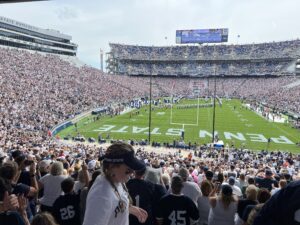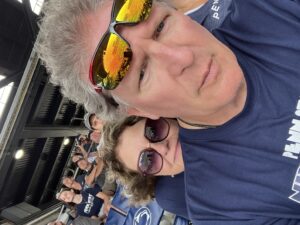Embarking on a road trip along the mesmerizing West Coast offers an unparalleled opportunity to explore a diverse range of landscapes, cultures, and attractions. Stretching from the lush forests of Washington state down to the sun-soaked beaches of California, this route boasts an abundance of must-visit destinations that cater to every traveler’s preferences. Here’s a comprehensive guide to some of the best places to explore on a West Coast road trip.
1. Seattle, Washington:
Kickstart your journey in the vibrant city of Seattle. Marvel at the iconic Space Needle, stroll through Pike Place Market, and immerse yourself in the city’s rich music scene. A visit to the Chihuly Garden and Glass is a visual treat, while the Museum of Pop Culture caters to pop culture enthusiasts.
2. Portland, Oregon:
As you head south, stop in Portland for its hipster charm. Explore the International Rose Test Garden, Powell’s City of Books, and indulge in the city’s renowned food truck scene. Nearby, the Columbia River Gorge offers spectacular waterfalls and hiking trails.
3. Crater Lake, Oregon:
Venture inland to witness the breathtaking Crater Lake, a sapphire-blue caldera lake nestled within an ancient volcano. Hiking, fishing, and simply taking in the awe-inspiring views are essential here.
4. San Francisco, California:
Crossing into California, San Francisco beckons with the iconic Golden Gate Bridge, Alcatraz Island, and the historic cable cars. Explore the diverse neighborhoods, from bustling Chinatown to the artsy Mission District.
5. Big Sur, California:
Driving down the Pacific Coast Highway, you’ll encounter the rugged beauty of Big Sur. The Bixby Creek Bridge, McWay Falls, and the dramatic cliffs that plunge into the ocean create a mesmerizing landscape.
6. Santa Barbara, California:
Known as the “American Riviera,” Santa Barbara offers palm-lined streets, Spanish architecture, and stunning beaches. Visit the Santa Barbara Mission and unwind on State Street’s shops and cafes.
7. Los Angeles, California:
Continue south to the sprawling city of Los Angeles. Experience the glamour of Hollywood, relax on Santa Monica Beach, and explore the Getty Center’s art collection.
8. San Diego, California:
Further down, San Diego boasts a laid-back vibe. Discover Balboa Park, home to museums and the famous San Diego Zoo. Coronado Island’s pristine beaches and the historic Gaslamp Quarter are also worth a visit.
9. Joshua Tree National Park, California:
Inland, the surreal landscapes of Joshua Tree National Park await. The unique desert environment, striking rock formations, and stargazing opportunities make this a true natural wonder.
10. Palm Springs, California:
Relax in the desert oasis of Palm Springs, known for its mid-century modern architecture, upscale resorts, and rejuvenating hot springs.
11. Santa Monica, California:
Returning to the coast, Santa Monica offers a quintessential California beach experience. The Santa Monica Pier, Pacific Park, and the vibrant Third Street Promenade are popular attractions.
12. Malibu, California:
Just up the coast, Malibu’s pristine beaches and stunning coastal views are a paradise for surfers and beach lovers. Zuma Beach and El Matador State Beach are highlights.
13. Santa Cruz, California:
As you head north again, Santa Cruz welcomes you with its laid-back beach town atmosphere. The Santa Cruz Beach Boardwalk and the towering redwoods of nearby Henry Cowell Redwoods State Park are not to be missed.
14. Monterey and Carmel-by-the-Sea, California:
Explore the historic Cannery Row in Monterey and then venture to the charming village of Carmel-by-the-Sea, known for its artistic community and beautiful coastline.
15. Napa Valley, California:
For a taste of luxury, drive inland to Napa Valley, a world-renowned wine region. Enjoy wine tasting, culinary delights, and scenic vineyard views.
From the bustling cities to the tranquil coastal retreats, a West Coast road trip offers an unforgettable blend of experiences. Whether you’re captivated by natural wonders, enthralled by urban landscapes, or seeking the serenity of the ocean, this journey promises to satisfy every traveler’s wanderlust. Plan well, pack your camera, and get ready for an adventure of a lifetime on this road trip of diverse wonders.
Exploring the Eastern coast of the United States
Exploring the Eastern coast of the United States by road trip offers a captivating journey through a diverse tapestry of landscapes, cultures, and historical sites. Stretching from the rocky shores of Maine to the sunny beaches of Florida, this region boasts an array of must-visit destinations. Embarking on a road trip along the East Coast promises a memorable adventure filled with breathtaking natural wonders, iconic cities, and charming small towns. Here are some of the best places to include on your East Coast road trip itinerary:
* Acadia National Park, Maine: Start your journey in Bar Harbor, Maine, and immerse yourself in the rugged beauty of Acadia National Park. Explore the park’s granite peaks, pristine lakes, and stunning coastline along the Park Loop Road.
* Boston, Massachusetts: Delve into American history by visiting Boston’s Freedom Trail, which takes you to 16 historically significant sites. Don’t miss exploring Faneuil Hall, Quincy Market, and taking a stroll along the charming streets of Beacon Hill.
* Cape Cod, Massachusetts: Experience the classic New England charm of Cape Cod with its picturesque lighthouses, sandy beaches, and quaint fishing villages.
* Newport, Rhode Island: Discover the opulent mansions of the Gilded Age, such as The Breakers and Marble House, and enjoy the coastal beauty of this historic town.
* New York City, New York: No East Coast road trip is complete without a stop in the Big Apple. Explore Times Square, Central Park, the Statue of Liberty, and the myriad of cultural attractions this iconic city has to offer.
* Philadelphia, Pennsylvania: Visit Independence Hall and the Liberty Bell, symbols of American freedom and democracy. Philly’s vibrant food scene and diverse neighborhoods are also worth exploring.
* Washington, D.C.: Immerse yourself in the nation’s capital by touring the National Mall, visiting the Smithsonian museums, and admiring the grandeur of historic landmarks like the Lincoln Memorial and the Capitol.
* Outer Banks, North Carolina: Relax on the pristine beaches of the Outer Banks, known for its stunning sand dunes, lighthouses, and water sports.
* Charleston, South Carolina: Experience southern charm in Charleston with its cobblestone streets, antebellum architecture, and vibrant cultural scene.
* Savannah, Georgia: Wander through Savannah’s charming historic district, characterized by its oak-lined streets, historic squares, and well-preserved architecture.
* St. Augustine, Florida: As the oldest city in the United States, St. Augustine offers a glimpse into the nation’s past with its Spanish colonial architecture and historic sites.
* Orlando, Florida: For family fun, visit Orlando’s world-famous theme parks, including Walt Disney World, Universal Studios, and SeaWorld.
* Miami, Florida: Enjoy the vibrant culture, beautiful beaches, and lively nightlife of Miami. Explore the art-deco architecture of South Beach and indulge in diverse culinary experiences.
* Key West, Florida: Journey to the southernmost point of the continental U.S. and savor the laid-back atmosphere, colorful houses, and stunning sunsets of Key West.
* Cumberland Island, Georgia: Take a ferry to Cumberland Island and revel in its unspoiled beauty, featuring pristine beaches, maritime forests, and historic ruins.
* Assateague Island, Maryland: Encounter wild ponies on the shores of Assateague Island and bask in the natural beauty of its beaches and marshlands.
* Cape May, New Jersey: Admire Victorian architecture, stroll along the beach, and enjoy the charming shops and restaurants of this historic seaside town.
* Bar Harbor, Maine: Conclude your road trip with a return to Bar Harbor, where you can savor fresh seafood, explore charming shops, and reflect on the incredible journey you’ve undertaken.
From the serene landscapes of Maine to the vibrant streets of Miami, an East Coast road trip offers an unparalleled opportunity to experience the rich tapestry of American culture, history, and natural beauty. Whether you’re drawn to the urban energy of cities or the tranquility of coastal towns, the East Coast has something to captivate every traveler’s heart. Pack your bags, hit the road, and embark on a journey of a lifetime along this remarkable stretch of America’s coastline.
Publick House Chester NJ a great weekend get away!!!!






This summer I have been on trains, in Maine, baseball games in Pittsburgh, and all sorts of little getaway!!!!
As you can see while in Maine I hit the beach and did the national park on bike and scooter!!!!









Travel After Covid:
After the Covid-19 lockdowns, the world of travel underwent a significant transformation. As restrictions gradually lifted and people began to explore the idea of travel once again, several noticeable changes emerged in the way people approached and experienced their journeys.
* Health and Safety Measures: Health and safety became paramount. Airports, airlines, hotels, and tourist attractions implemented rigorous sanitation and hygiene protocols. Mask-wearing, temperature checks, hand sanitizers, and social distancing measures became common sights, reassuring travelers about their well-being.
* Digital Transformation: Technology played a crucial role in minimizing physical contact. Contactless check-ins, digital boarding passes, and touchless payment systems became the norm, reducing the need for face-to-face interactions.
* Domestic and Local Travel: Initially, many travelers preferred to explore their own countries or nearby regions. Domestic and local travel saw a surge, as people sought to satisfy their wanderlust while still staying within familiar borders.
* Sustainable and Responsible Tourism: The pandemic highlighted the environmental impact of travel. As a result, there was a greater emphasis on sustainable and responsible tourism practices. Travelers showed a heightened awareness of their carbon footprint and sought out eco-friendly accommodations and activities.
* Flexible Bookings: Travel plans became more flexible. Airlines and accommodations introduced more lenient cancellation and rescheduling policies to accommodate changing circumstances, giving travelers greater peace of mind.
* Off-the-Beaten-Path Exploration: With popular tourist destinations often being crowded, travelers began seeking out off-the-beaten-path destinations to avoid crowds and have unique experiences.
* Workations and Slow Travel: The rise of remote work led to the concept of “workations,” where people would travel while still fulfilling their work responsibilities. Slow travel gained popularity, allowing travelers to immerse themselves more deeply in local cultures and communities.
Thanks to some great friends did make it to the second Penn State Game of the 2022 Season!


I have been mostly Tent Camping but did hit Atlantic City for Labor Day!



Latest Trips!
Ok, so travel has opened up a bit! I have been doing some camping and some castle staying! Last places I camped were the KOAs in New Tripoli PA and Harpers Ferry WV. (became a KOA member, also bought two new tents) Here are photos of the outside of Skyland’s Manor Ringwood, NJ, and my cabin in Harpers Ferry!!! Get out and see the US while travel over seas is still questionable!
. 
. 
Vegas is opening up! April 2021!
Video I shot at Siegfried & Roy’s Secret Garden:
https://youtu.be/EhXuYCm5Jgw
A Video of my Trip to the Edge of Space 2014 (a bucket list trip)
https://youtu.be/RpCdNYq1Cag